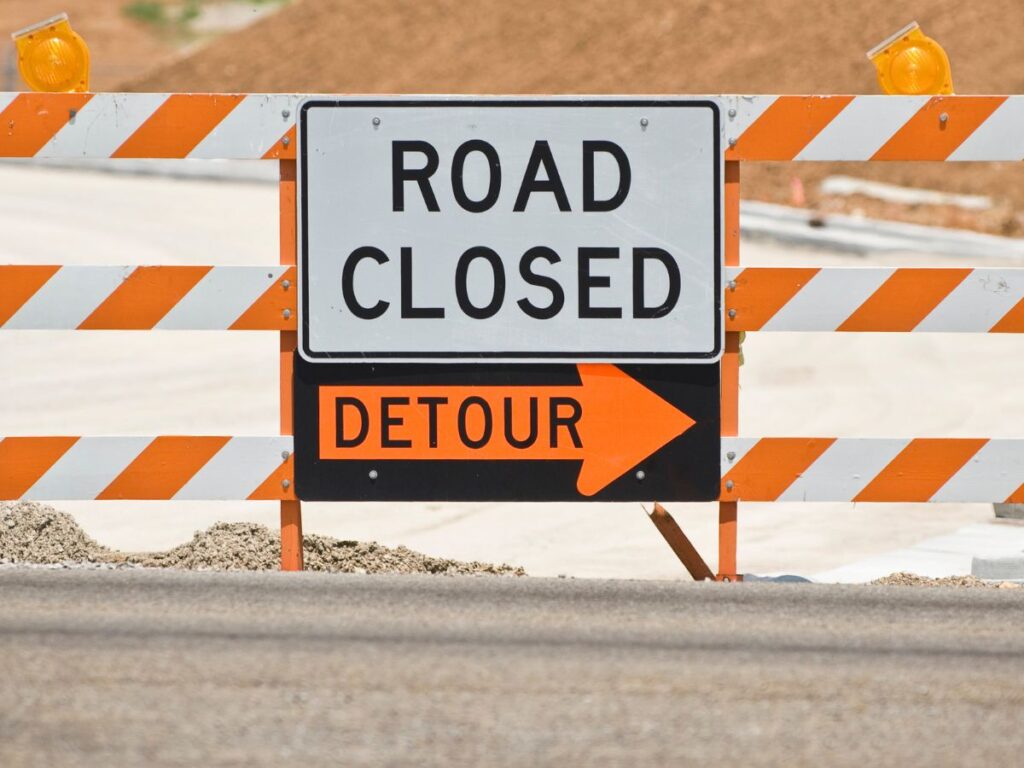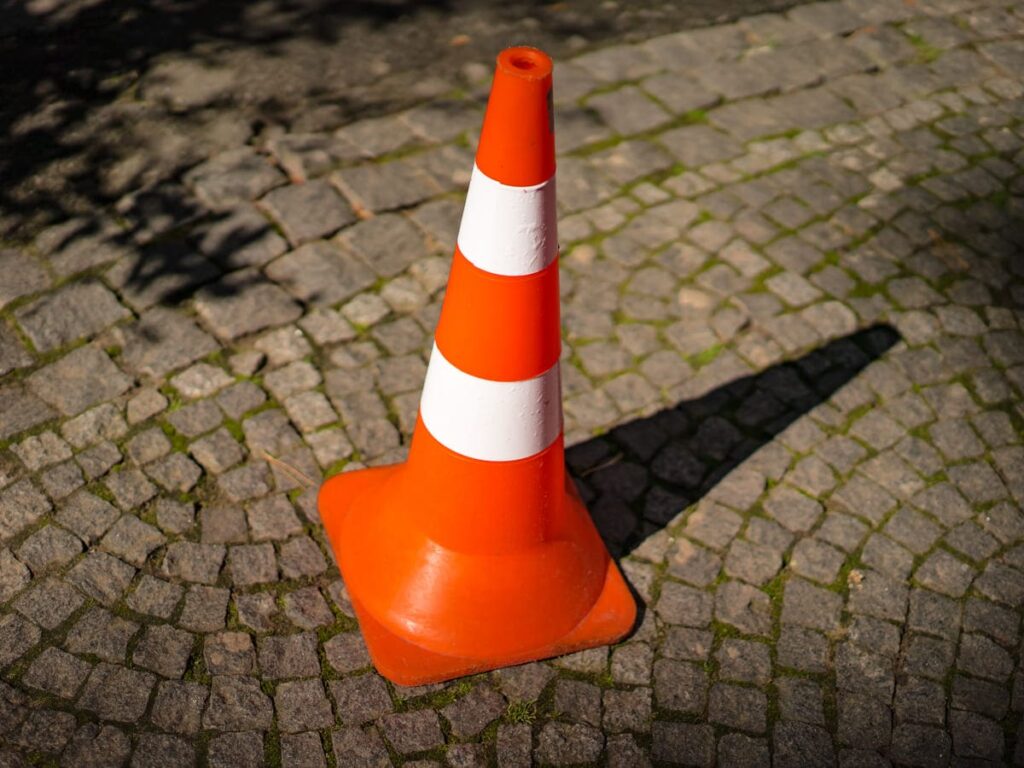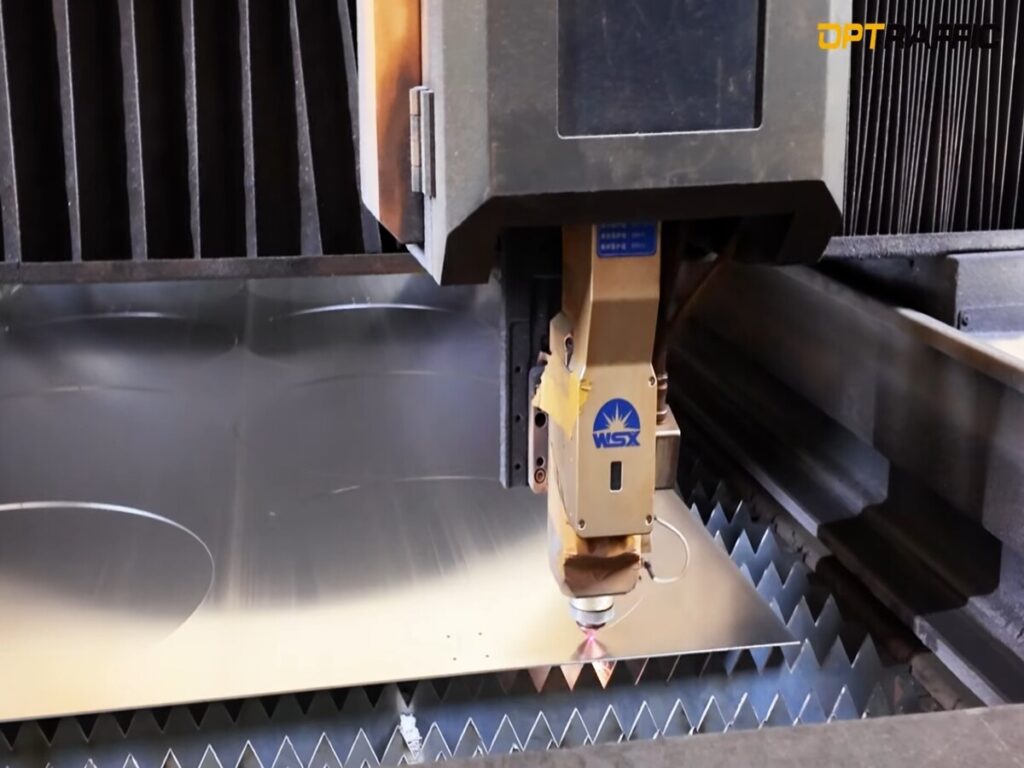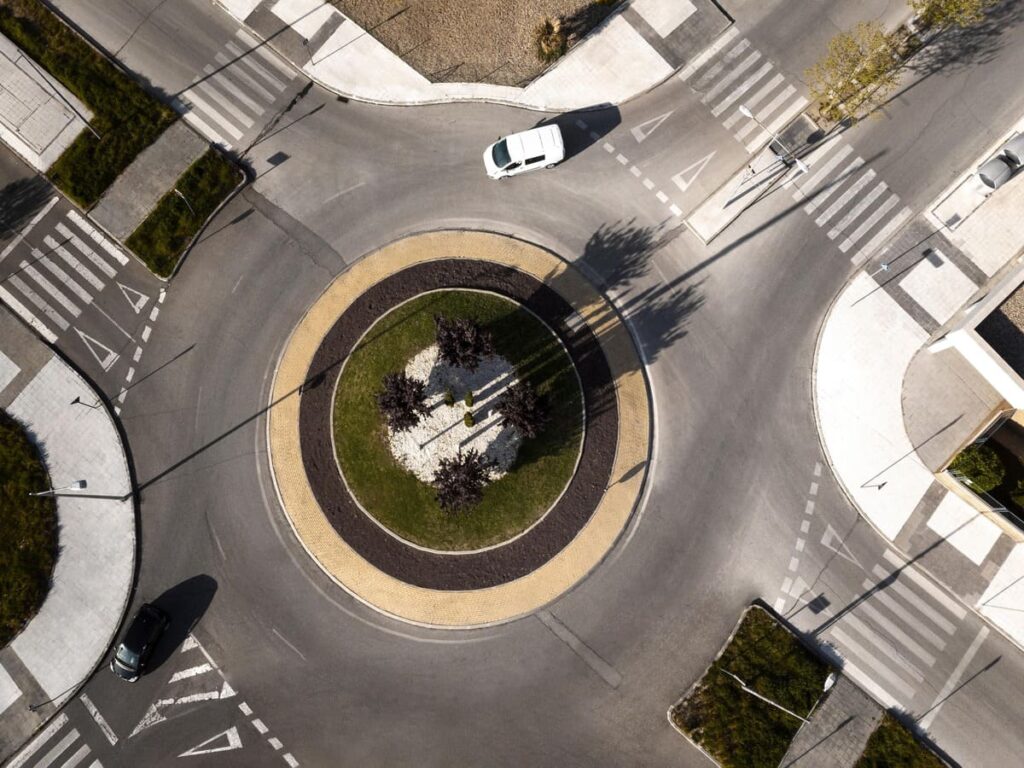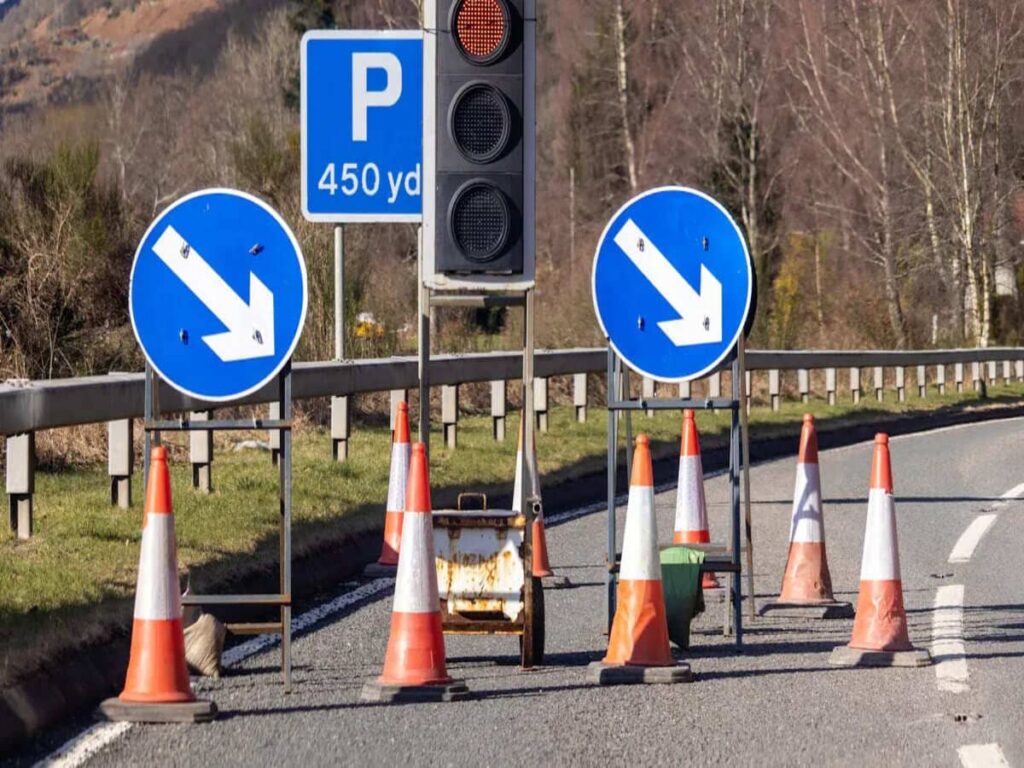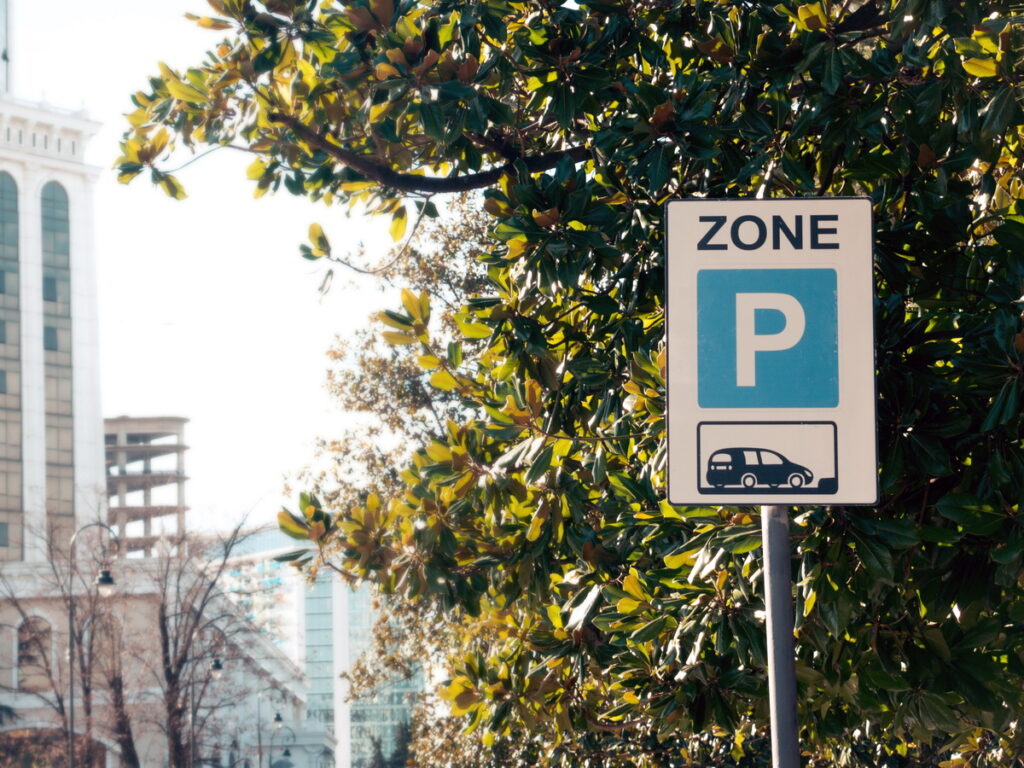
يلعب الألمنيوم دورًا حاسمًا في لافتات الطرق بسبب خفة وزنه, قوة, ومقاومة الصدأ. عند اختيار علامات الألومنيوم, من المهم مراعاة العديد من العوامل التي تؤثر على وزن صفائح الألمنيوم المعدنية. وتشمل هذه العوامل سمك, مقاس, نوع سبيكة, الطلاءات, والتصميم. يمكن أن يؤثر كل خيار من هذه الاختيارات على التكلفة الإجمالية لمشروعك, فضلا عن السلامة والامتثال التنظيمي. على سبيل المثال, يزيد سمك الألومنيوم من وزن صفائح الألمنيوم المعدنية, وهو ما يعني عمومًا تكلفة أعلى ولكن متانة أكبر. تعمل بعض السبائك والطلاءات أيضًا على تعزيز قوة العلامة وطول عمرها. يوضح الجدول أدناه مدى تأثير السُمك ونوع السبيكة على التكلفة, أمان, والتركيب, مساعدتك في تحديد الخيار الأفضل لاحتياجاتك.
سمك ووزن صفائح الألمنيوم المعدنية
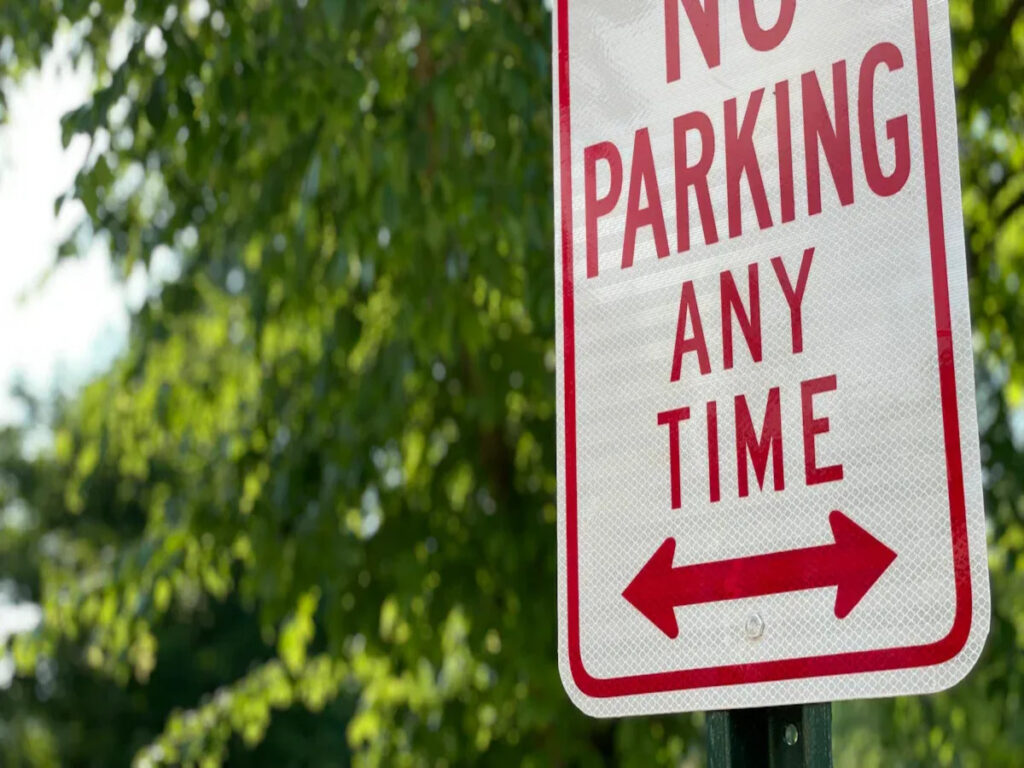
تأثير سمك
السُمك هو الشيء الرئيسي الذي يغير وزن صفائح الألمنيوم في لافتات الطرق. إذا قمت بجعل ورقة الألومنيوم أكثر سمكا, يصبح أثقل. يحدث هذا لأن الصفائح السميكة تحتوي على حجم أكبر. الأوراق الأكثر سمكا أقوى وتستمر لفترة أطول. يعد هذا أمرًا جيدًا للعلامات الموجودة في الأماكن العاصفة أو الطرق المزدحمة.
فيما يلي جدول يوضح مدى توافق نطاقات السُمك مع استخدامات إشارات الطريق ووزنها:
| نطاق سمك (بوصة) | تطبيق نموذجي | التأثير على الوزن والاستخدام |
|---|---|---|
| .040″ | لافتات داخلية صغيرة أو لوحات عرض | خفيف الوزن, سهلة المعالجة, وزن أقل |
| .080″ | معظم اللافتات الإعلانية الخارجية | قوة متوازنة ووزن معتدل |
| .125″ | علامات خارجية كبيرة أو متينة للغاية | زيادة القوة والمتانة, الوزن الأثقل يؤثر على التركيب والنقل |
عندما يرتفع سمك, وزن صفائح الألمنيوم المعدنية يرتفع أيضا. يؤثر هذا التغيير على التكلفة وكيفية التحرك ووضع العلامات.
المقياس والوزن
يساعدك نظام القياس على معرفة مدى سماكة صفائح الألمنيوم. يشير رقم المقياس المنخفض إلى أن الورقة أكثر سمكًا وأثقل. على سبيل المثال, 16 قياس الألومنيوم على وشك 0.0508 بوصة سميكة. يعطي هذا السماكة قوة جيدة ويسهل التعامل معها. إنه يعمل بشكل جيد في صنع إشارات الطرق لأنه يمكنه تحمل الطقس وليس ثقيلًا جدًا.
فيما يلي جدول يوضح كيفية تطابق المقياس مع السُمك والوزن:
| كَيّل | سماكة (بوصة) | سماكة (مم) | وزن (رطل لكل متر مربع. قدم) | التضمين الرئيسي |
|---|---|---|---|---|
| 14 | ~0.0641 | ~1.63 | ~0.91 | ورقة أكثر سمكا وأثقل, مناسبة للافتات الدائمة |
| 16 | ~0.0508 | ~1.29 | أخف وزنا في المقابل | أرق وأخف وزنا, موازنة القوة وسهولة الإدارة |
إذا اخترت مقياس أقل, ستكون الورقة أكثر سمكًا وتزن أكثر. يغير هذا الاختيار طريقة حمل علامات الطريق وتثبيتها.
اختيار سمك
اختيار السُمك المناسب لعلامة الطريق المصنوعة من الألومنيوم يعتمد على حجم العلامة, موقع التثبيت, والتعرض للرياح. يمكن للعلامات الصغيرة في المناطق ذات حركة المرور المنخفضة استخدام صفائح أرق, بينما تتطلب اللافتات الكبيرة على الطرق السريعة أو العلوية ألومنيومًا أكثر سمكًا لتظل مستقرة ومتوافقة.
| حجم الإشارة (منطقة) | سمك ورقة الألومنيوم الموصى بها (بوصة) | الاعتبارات الرئيسية |
|---|---|---|
| علامات صغيرة (وقوف السيارات, الممتلكات الخاصة) | .040″ (≈1.0 ملم) | خفيف الوزن, سهل التركيب; مناسبة مؤقتة أو غير-Mutcd التطبيقات |
| علامات متوسطة (تنظيمي, علامات الشوارع) | .080″ (≈2.0 ملم) | متوافق مع MUTCD; قوية بما يكفي لمقاومة الانحناء وتحمل أحمال الرياح العادية |
| علامات كبيرة (الطريق السريع, مرشد, النفقات العامة) | .125″ (≈3.2 ملم) | مطلوب للمناطق ذات الرياح العاتية; يوفر أقصى قدر من الصلابة ولكنه أثقل عند التثبيت |
معظم نحن. علامات الطريق يتم إنتاجها في .080″ ألومنيوم, الذي يوازن بين المتانة والتعامل مع تلبية متطلبات MUTCD. .040"أوراق يمكن استخدامها للعلامات المؤقتة أو الخاصة, بينما .125"أوراق يتم اختيارها للعلامات الإرشادية للطرق السريعة كبيرة الحجم والبيئات الساحلية حيث تعد الرياح والتآكل من العوامل الرئيسية.
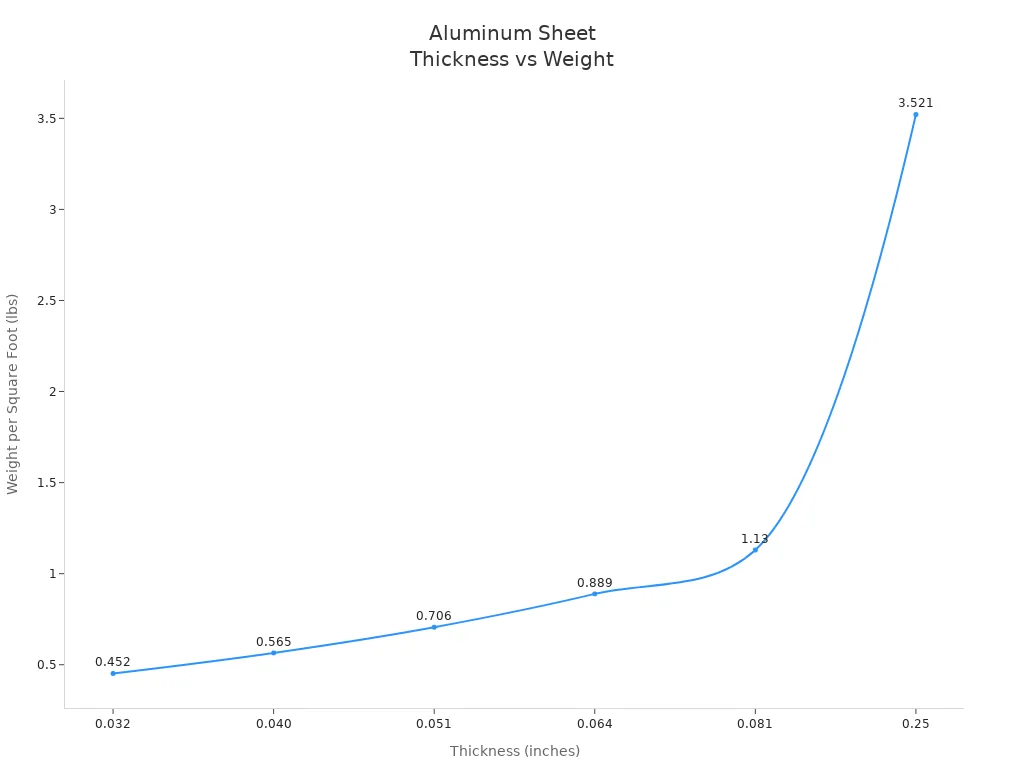
الأبعاد وعلامات الطريق
حساب الحجم والوزن
يجب أن تعرف حجم برجك قبل معرفة وزنه. يخبرك الطول والعرض بكمية الألومنيوم التي تحتاجها. تستخدم اللافتات الأكبر كمية أكبر من الألومنيوم وتزن أكثر. للعثور على الوزن, اضرب الطول, عرض, وسمك معا. على سبيل المثال, علامة ذلك 10 القدمين 12 قدم و 1/8 بوصة سميكة تحتاج إلى هذه الأرقام مضاعفة. هذا يمنحك الحجم الإجمالي. ثم, اضرب في كثافة الألومنيوم للحصول على الوزن. يساعدك هذا على التخطيط لكيفية نقل اللافتة وتثبيتها.
قياسي مقابل. أحجام مخصصة
الأحجام القياسية تجعل مشاريع اللافتات أسهل وأكثر فعالية من حيث التكلفة. التنسيقات الشائعة مثل 18″×24″, 24″×36″, و 24 × 48 بوصة تناسب إطارات التثبيت القياسية وعادةً ما تستخدم الألومنيوم الرقيق (.040″-.063″), مما يقلل الوزن ويبسط التثبيت. تسمح الأحجام المخصصة للمقاولين بتصميم أي شكل أو بعد, لكن الألواح الأكبر غالبًا ما تتطلب ذلك .080"أو .125" ألومنيوم للحفاظ على الصلابة, مما يجعلها أثقل وأكثر تعقيدًا في التثبيت. بالإضافة إلى الحجم, يؤثر نوع اللوحة أيضًا على الوزن. مادة الألومنيوم المركبة (ACM) الألواح أخف وزنًا من صفائح الألمنيوم الصلبة بينما لا تزال توفر متانة خارجية طويلة الأمد.
| نوع اللوحة | سماكة (بوصة / مم) | وزن (كجم/م²) | وصف |
|---|---|---|---|
| لوحة الألومنيوم المركبة | 0.16″ (≈4 ملم) | 6.3 - 7.6 | ورقتان رفيعتان من الألومنيوم مع قلب بلاستيكي, أخف بكثير من الألومنيوم الصلب |
| لوحة الألومنيوم الصلبة | 0.16″ (≈4 ملم) | 10.8 - 15 | لوح ألومنيوم سميك واحد, أثقل بكثير |
👉 نصيحة: للعلامات الإرشادية الكبيرة أو منشآت الطرق السريعة, غالبًا ما توافق DOTs على الحالة لوحات ACM كبديل أخف للألمنيوم الصلب, بشرط أن تفي المادة أستم B209 و ASTM D4956 متطلبات.
اعتبارات التوقيع الكبيرة
العلامات الكبيرة تحتاج إلى تخطيط إضافي. يجب أن تفكر في نقلها وتركيبها. إذا طلبت العديد من اللافتات أو الأوراق الكبيرة جدًا, تواجه المزيد من المشاكل. قد تحتاج إلى تصاريح, مقطورات خاصة, والمركبات المرافقة. يجب عليك استخدام السلاسل والأغطية للحفاظ على سلامة الألومنيوم. تحتاج أيضًا إلى مساحة لتخزين اللافتات والحفاظ عليها من التلف. تعمل ألواح الألمنيوم المركبة على تسهيل التعامل مع اللافتات الكبيرة لأنها تزن أقل. تحتاج ألواح الألمنيوم الصلبة إلى المزيد من الأشخاص أو الآلات لتثبيتها, لكنها تدوم لفترة أطول في الأماكن الصعبة. خطط دائمًا لمسارك وتحقق من القواعد المحلية قبل تحريك اللافتات الكبيرة. هذا يحافظ على مشروعك آمنًا وفي الوقت المحدد.
في أوبترافيك, نحن نقدم كلاً من ألواح الألومنيوم الصلبة والألومنيوم المركبة المصنعة وفقًا لمعايير ASTM وMUTCD, منح المقاولين المرونة في اختيار الخيار المناسب للطرق السريعة, مدينة, أو مشاريع التوقيع المخصصة. استكشف حلولنا لألواح الألمنيوم.
نصيحة: اختر ألواح الألمنيوم المركبة للعلامات الكبيرة إذا كنت تريد سهولة التعامل والتركيب بشكل أسرع. استخدم الألومنيوم الصلب عندما تحتاج إلى المزيد من القوة والمتانة.
سبائك الألومنيوم والكثافة
أنواع السبائك
عند اختيار المواد لإشارات الطرق, ترى الكثير سبائك الألومنيوم. كل سبيكة لها نقاط قوة واستخدامات خاصة. عادةً ما تحدد نقاط النقاط ومصنعي العلامات 5052-الألومنيوم H38 لتطبيقات الطرق السريعة والساحلية, لأنه يوفر مقاومة فائقة للتآكل ضد رذاذ الملح والتلوث الصناعي. 6061-يتم استخدام T6 عندما تتطلب العلامات قوة هيكلية إضافية, مثل العلامات العملاقة العلوية, على الرغم من أنها أقل تشكيلاً. لإشارات البلدية والشوارع, 3003 و 3105 لا تزال السبائك شائعة بسبب فعاليتها من حيث التكلفة وسهولة التصنيع. تتوافق اختيارات السبائك هذه مع مواصفات ASTM B209 لصفائح الألومنيوم المستخدمة في البنية التحتية لوسائل النقل.
فيما يلي جدول يقارن بين سبائك الألومنيوم الشائعة لإشارات الطرق:
| سبيكة الألومنيوم | كثافة (ز/سم) | ملخص القوة والخصائص |
|---|---|---|
| 6061 (6000 مسلسل) | 2.7 | قوة جيدة, مقاومة التآكل, سهل التشكيل, فعالة من حيث التكلفة, تستخدم على نطاق واسع لمعظم علامات الطريق |
| 7075 (7000 مسلسل) | 2.81 | قوة أعلى, أثقل, أكثر تكلفة, أصعب للعمل مع, تستخدم للتطبيقات الدائمة المتخصصة |
يمكنك أن ترى 6061 أخف وأسهل في الاستخدام. 7075 أثقل وأقوى ولكنه يكلف أكثر. تستخدم معظم علامات الطريق 6061 أو 5052 لأنها توازن الوزن, قوة, والسعر.
اختلافات الكثافة
تتغير كثافة سبائك الألومنيوم عند خلط عناصر مختلفة. إضافة النحاس أو الزنك يجعل السبيكة أثقل. المغنيسيوم والسيليكون يجعلها أخف وزنا. تؤثر هذه التغييرات على وزن صفائح الألمنيوم. إذا اخترت سبيكة ذات كثافة أقل, برجك يزن أقل. وهذا يساعدك على نقل وتركيب اللافتات الكبيرة أو المرتفعة.
معظم سبائك الألومنيوم المستخدمة في لافتات الطرق لها كثافة حولها 2.7 ز/سم. وهذا أخف بكثير من الفولاذ, وهو على وشك 7.87 ز/سم. علامات الألومنيوم أسهل في الحمل والتركيب. على الرغم من أنها خفيفة, لا تزال هذه السبائك قوية بما يكفي لعلامات الطريق. على سبيل المثال, 6061 سبيكة لديها كثافة حوالي 2.7 ز/سم. 7075 أثقل قليلا في 2.81 ز/سم. ال 5052 سبيكة لديها المغنيسيوم, لذلك فهو أخف وزنا وجيد للقوي, علامات الضوء.
نصيحة: يساعدك اختيار سبيكة ذات كثافة أقل على إنشاء علامات طريق أخف وزنًا. لا تفقد القوة أو المتانة.
عوامل الأداء
تغير السبيكة التي تختارها كيفية تعامل علامة الطريق الخاصة بك مع الطقس, يضرب, والوقت. بعض السبائك تقاوم الصدأ بشكل أفضل, مما يساعد إذا كانت علاماتك تواجه المطر, ثلج, أو الهواء المالح. والبعض الآخر أقوى, حتى يتمكنوا من التعامل مع الرياح أو الأشياء التي تضربهم.
فيما يلي جدول يوضح كيفية عمل سبائك الألومنيوم المختلفة لإشارات الطرق:
| سبيكة الألومنيوم | الخصائص الرئيسية | التأثير على المتانة ومقاومة الطقس |
|---|---|---|
| 3003-ح18 | قابلية التشكيل استثنائية, مقاومة التآكل, متانة | مثالية لإشارات الشوارع; يتحمل الظروف الجوية المتنوعة مع الحفاظ على الوضوح وطول العمر |
| 5052-H38 | قوة الشد العالية, مقاومة فائقة للتآكل | مناسبة لإشارات الطرق السريعة المعرضة لحركة المرور عالية السرعة والبيئات القاسية; يضمن طول العمر والرؤية |
| 6061-T6 | قوة ومتانة استثنائية | تستخدم للعلامات التنظيمية التي تتطلب المتانة ضد الضغوط والتأثيرات البيئية; يحافظ على السلامة الهيكلية والرؤية |
| 3004-H38 | قابلية جيدة للتشكيل ومقاومة للتآكل | مفضل للعلامات التحذيرية التي تحتاج إلى رؤية عالية ومتانة في الأماكن الخارجية; يحافظ على الوضوح ويتحمل الظروف البيئية |
يجب عليك مطابقة السبيكة مع احتياجات مشروعك. ل الطرق السريعة المزدحمة أو المناطق الساحلية, 5052-H38 هو اختيار ذكي. إذا كنت تريد علامة يمكن تشكيلها وتثبيتها بسهولة, 6061-T6 هو خيار جيد. تعتبر السبائك مثل 3003-H18 و3004-H38 رائعة للاستخدام في الشوارع واللافتات التحذيرية. يحافظون على لونهم وشكلهم في جميع أنواع الطقس.
ملحوظة: يساعد اختيار سبائك الألومنيوم المناسبة على استمرار علاماتك لفترة أطول ويسهل رؤيتها. سوف تقضي وقتًا ومالًا أقل في إصلاحها.
المعالجات السطحية وخيارات اللافتات المركبة من الألومنيوم
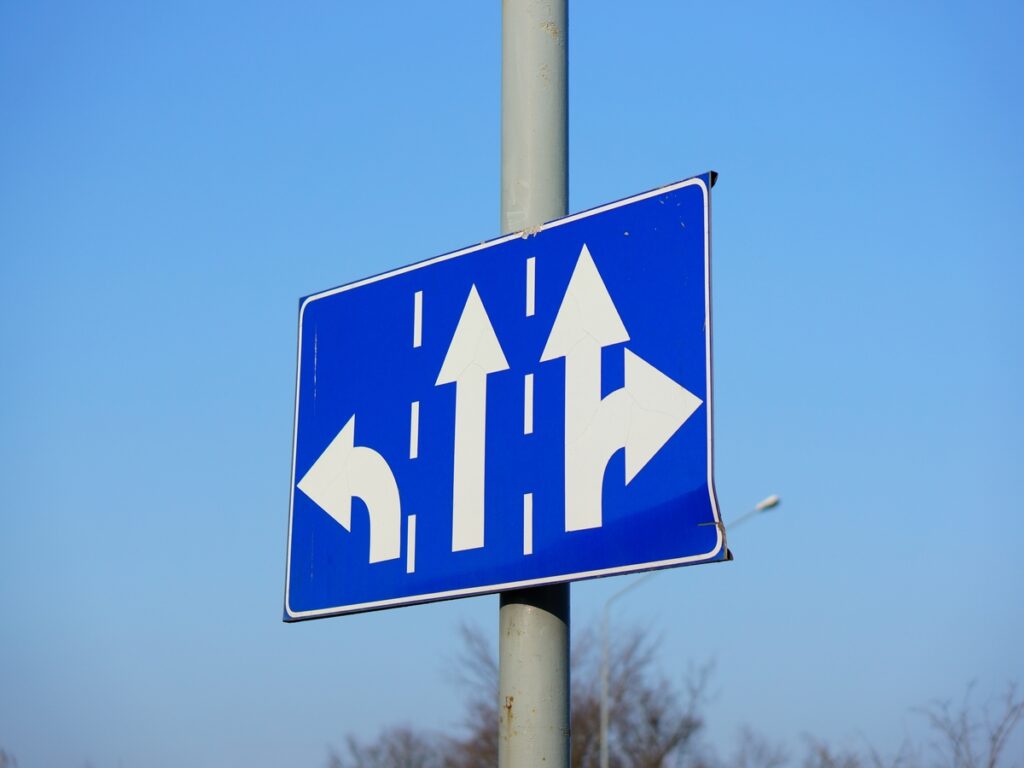
الطلاءات والأفلام
غالبًا ما تبدو لافتات الطرق مشرقة ولامعة بسبب الطلاء والأغشية. وتشمل هذه الطبقات الطلاء, أفلام عاكسة, والطلاءات الواقية. أنها تساعد على تبرز العلامات وتستمر لفترة أطول. عند إضافة هذه الطبقات, العلامة تصبح أثقل قليلاً. كل طبقة رقيقة, لكنهم معًا يضيفون وزنًا, خاصة على العلامات الكبيرة. تساعد الأفلام العاكسة السائقين على رؤية الإشارات في الليل. الطلاءات الواقية تمنع الصدأ والخدوش. تذكر دائمًا أن تحسب هذه الطبقات عندما تكتشف الوزن النهائي لعلامة الألومنيوم المركبة.
الألومنيوم المركب
علامات الألومنيوم المركبة لها تصميم خاص. يستخدمون ورقتين رفيعتين من الألومنيوم مع قلب بلاستيكي في المنتصف. شكل الساندويتش هذا يجعلها أخف بكثير من صفائح الألمنيوم الصلبة. يمكنك تحريك ووضع لافتات الألمنيوم المركبة بسهولة أكبر. يساعدك الوزن الخفيف على توفير الوقت والمال عند التثبيت. على الرغم من أنها أخف وزنا, لا تزال علامات الألومنيوم المركبة قوية بالنسبة لمعظم الاستخدامات. يمكنك استخدامها للعلامات الخارجية, عروض, والإعلانات. صفائح الألمنيوم الصلبة أقوى وتقاوم الحريق بشكل أفضل, لكنها أثقل. اللافتات المركبة من الألومنيوم لا تصدأ ويمكنها تحمل الأحوال الجوية السيئة. إذا كنت تريد أن تعرف كم من الوقت تستمر, هو عادة 10 ل 20 سنين, اعتمادا على الطلاء. يختار العديد من الأشخاص مركب الألومنيوم لأنه سهل الاستخدام ويدوم لفترة طويلة.
نصيحة: اختر مركب الألومنيوم للعلامات الكبيرة أو العالية. فهو يجعل التثبيت أسهل وأكثر أمانا.
المتطلبات التنظيمية
هناك قواعد لاستخدام الطلاءات والأفلام على لافتات الطرق. تقول العديد من الأماكن أنه يجب عليك استخدام أفلام عاكسة لإشارات المرور ليلاً. يجب أن تتبع الطلاءات الموجودة على لافتة الألومنيوم المركبة القواعد المحلية والوطنية. تساعد هذه القواعد علامتك على البقاء آمنًا, قوي, ويسهل رؤيتها في أي طقس. تحقق دائمًا من أحدث القواعد قبل شراء أو وضع لافتة مركبة من الألومنيوم. وهذا يضمن أن مشروعك آمن ويلبي جميع المعايير.
ميزات التصميم والتركيب
الثقوب والقواطع
يمكنك جعل لافتات الطرق المصنوعة من الألومنيوم أخف وزنًا عن طريق إضافة الثقوب, القواطع, أو أشكال خاصة. عند استخدام تصميمات مثل قطع الدائرة, تخفيضات بيضاوية, أو حفر ثقوب, قمت بإزالة بعض المعدن. وهذا يقلل من الوزن الإجمالي للعلامة. حتى مع وجود مواد أقل, لا يزال بإمكان العلامة أن تظل قوية وتحافظ على شكلها. تتيح لك الأشكال والثقوب المخصصة مطابقة اللافتة للغرض منها مع تسهيل التعامل معها. على سبيل المثال, اللافتات ذات الثقوب المتصاعدة أو الخطوط العريضة الفريدة تزن أقل وأسهل في التثبيت, خاصة على الأعمدة الطويلة أو في الأماكن التي يصعب الوصول إليها.
نصيحة: استخدم القواطع والثقوب لتقليل وزن اللافتات الكبيرة دون فقدان متانتها.
سلامة التثبيت
يؤثر وزن علامة الألومنيوم الخاصة بك على كيفية تثبيتها والمعدات التي تحتاجها. من السهل حمل العلامات الأخف, يرفع, وجبل. يمكنك غالبًا استخدام أدوات بسيطة وعدد أقل من الأشخاص. قد تتطلب العلامات الأثقل معدات خاصة, مثل المصاعد أو الرافعات, والمزيد من العمال للتركيب الآمن. للحفاظ على مشروعك آمنًا واتباع القواعد المحلية, يجب عليك:
- احصل على التصاريح الصحيحة قبل البدء في التثبيت.
- اتبع قواعد تحديد الارتفاع والمسافة من الطريق.
- استخدم المواد المعتمدة وأجهزة التثبيت.
- تأكد من أن العلامة مستقرة ومرئية.
- تتيح لك علامات الألومنيوم خفيفة الوزن استخدام الحوامل القابلة للطي أو أقواس التثبيت الأساسية.
- يمكنك تثبيتها بسرعة, مما يوفر الوقت ويقلل من تكاليف العمالة.
المتانة في علامات الطريق
يساعد اختيار الوزن المناسب لعلامتك على الاستمرار لفترة أطول ويحافظ على سلامة الطرق. الألومنيوم يقاوم الصدأ ويقاوم الرياح, مطر, والشمس. إذا اخترت علامة خفيفة جدًا, قد ينحني أو ينكسر في الطقس القوي. إذا كان ثقيلا جدا, قد يكون من الصعب تثبيته وقد يحتاج إلى دعم إضافي. اختيار الوزن المناسب يعني أن علامتك ستبقى مرئية وقوية لسنوات. وهذا يساعد السائقين على رؤية المعلومات المهمة ويحافظ على حركة المرور بأمان.
ملحوظة: متينة, تعمل اللافتات المثبتة جيدًا على حماية السائقين واستثماراتك من خلال تقليل الحاجة إلى الإصلاحات أو الاستبدالات.
عند اختيار صفائح الألمنيوم لإشارات الطرق, فكر في السُمك, مقاس, سبيكة, الطلاءات, والتصميم. هذه الأشياء تغير مدى ثقلها, قوي, وصعبة الورقة. استخدم قائمة التحقق هذه لمساعدتك في الاختيار:
- اختر درجة الألومنيوم التي لا تصدأ.
- تأكد من أن المورد يتبع قواعد السلامة.
- تحقق مما إذا كان مسموحًا بالسمك والانعكاس.
- ابحث عن ميزات سهلة التثبيت مثل الثقوب المثقوبة بالفعل.
- معرفة ما إذا كان المورد موثوقًا به ويقدم ضمانًا.
يمكنك أن تطلب المساعدة من الخبراء للعثور على أفضل المواد لمشروعك, طقس, والميزانية. وهذا يضمن أن علاماتك آمنة واتباع القواعد في كل مرة. في أوبترافيك, يقدم فريقنا صفائح الألمنيوم وحلول لافتات المرور التي تتوافق مع معايير MUTCD وASTM, مساعدة المقاولين والبلديات على إكمال المشاريع بأمان, في الوقت المحدد, وفي حدود الميزانية.
التعليمات
ما هو أفضل سمك لعلامات الطريق الألومنيوم?
بالنسبة لإشارات الطرق المتوافقة مع MUTCD في الولايات المتحدة., 0.080-صفائح الألمنيوم بوصة هي معيار الصناعة, على النحو الموصى به من قبل الإدارة الفيدرالية للطرق السريعة (الهيئة الفيدرالية للطرق السريعة (FHWA).). بعض الدول, مثل تكساس دوت و فلوريدا دوت, تقبل أيضًا لوحات مقاس 125 بوصة لإشارات توجيه الطرق السريعة الكبيرة لتلبية متطلبات حمل الرياح الأعلى. لمواقف السيارات الصغيرة أو لافتات الملكية الخاصة, .040-قد تكون بوصة الألومنيوم كافية, ولكن هذه لا تلبي MUTCD للطرق العامة.
كيف أحسب وزن لوح الألمنيوم لعلامتي?
اضرب الطول, عرض, وسمك للحصول على الحجم. ثم, اضرب الحجم بكثافة الألومنيوم (2.7 ز/سم). وهذا يعطيك الوزن الإجمالي.
نصيحة: استخدم الآلة الحاسبة عبر الإنترنت للحصول على نتائج سريعة.
هل تضيف الطلاءات والأفلام وزنًا كبيرًا إلى لافتات الألومنيوم?
تضيف الطلاءات والأفلام كمية صغيرة فقط من الوزن. بالنسبة لمعظم العلامات, هذا الوزن الزائد لا يؤثر على التعامل أو التثبيت. لا يزال بإمكانك الحصول على رؤية وحماية أفضل.
هل ألواح الألمنيوم المركبة أخف وزنا من صفائح الألمنيوم الصلبة?
نعم, ألواح الألمنيوم المركبة تزن أقل. يستخدمون قلبًا بلاستيكيًا بين ورقتين رفيعتين من الألومنيوم. هذا التصميم يجعلها أسهل في الرفع والتركيب.
لماذا يهم نوع السبائك لوزن علامة الطريق?
السبائك المختلفة لها كثافات ونقاط قوة مختلفة. بعض السبائك تجعل علامتك أخف وزنًا وأكثر مقاومة للصدأ. يساعد اختيار السبيكة المناسبة على بقاء علامتك لفترة أطول والبقاء آمنًا.

